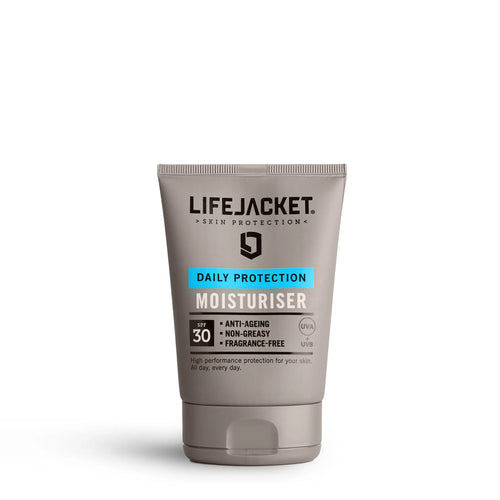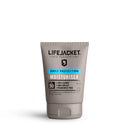The confusion that a sunscreen label causes consumers must be one of the biggest crimes in the cosmetics industry.
Why does it matter?
In countries like the UK and USA, skin cancer cases have doubled over the past 20 years and at the time of writing, World Health Organisation forecasts suggest the number will double again over the next 20 years.
The issue in our eyes
Somehow, a combination of government bureaucrats, scientists and the cosmetics industry have all made the sunscreen label overly complicated and a haven for misinterpretation and confusion.
The number of things you need to pay attention to, know, understand and digest on a sunscreen label is baffling.
As skin cancer numbers rise rapidly across the world, simple communication seems like a really obvious plan of attack for addressing the problem. The last thing any of us need is even the slightest bit of friction when it comes to skin protection because that can lead to people using products improperly, or worse, not at all.
Unfortunately, as a brand, we can't just go ahead and simplify the language on our packaging and labels. Governments and regulatory bodies provide us with a blueprint we must adhere to. All brands need to comply with FDA, European or other rules when it comes to cosmetics labelling and until those rules change, all we can do is help you try to understand the terminology.
Proof that sunscreens are misunderstood
Before we do that, we wanted to emphasise the point being made.
In 2017, the UK high-street retailer, Superdrug, carried out a survey of 2,000 consumers to test people’s sunscreen knowledge. Indeed, we do our own survey's every couple of years that support this but we wanted to make reference to independent research in this post.
Just under half of those surveyed in the Superdrug survey didn’t understand what SPF meant. Ten percent of people thought the SPF number represented the length of time they could lie in the sun before burning and the most misunderstood fact was that SPF is not that important.
At first, the results surprised us. We soon realised the responses replicated our own understanding up until we started LifeJacket. The survey represents a view of the majority. The majority doesn’t fully understand the details. And we're completely sympathetic. Labelling rules for sunscreens don't work. Somebody needs to tear up the rule book and start again.
Until that happens, here's how you can decipher a sunscreen label in 30 seconds.
Sunscreen label definitions and explanations
Things to be aware of on a sunscreen label:
- Cream/lotion/gel/oil/spray/stick – Start with the basics. This is the format that the formulation comes in. Simply put, this is how the product is dispensed onto your skin.
- Chemical vs. physical – Chemical vs. physical – There are two main types of sunscreen formulation. Chemical (organic) sunscreens contain carbon-based filters that absorb UV radiation and convert it into a small amount of heat before it can damage skin cells. Physical (inorganic) sunscreens, which use mineral filters like zinc oxide or titanium dioxide, mainly absorb UV in the same way but can also scatter a small amount of light. Despite the names, both types are made of chemicals – they just work differently and feel different on the skin. Read more here.
- Sun Protection Factor (SPF) – The sun’s ultraviolet light reaches your skin in two main forms: UVA and UVB. Both can damage skin and contribute to cancer. SPF measures how well a sunscreen protects against sunburn, which is mainly caused by UVB but includes a small UVA contribution. It doesn’t measure UVA protection directly, so look for the European “UVA in a circle” mark or a high UVA star rating to make sure you’re protected from both.
- UVA – This is the one people miss and shouldn’t. A good sunscreen must protect against UVA as well as UVB. As you now know, SPF covers off UVB. To make things confusing, UVA protection is marked by either the European symbol (the letters UVA in a circle) or the star rating system (stars placed within a circle). You need at least one of these indicators on your pack as UVA is the predominant form of UV light that reaches us on earth.
- Broad spectrum – This simply means that the sunscreen covers against both UVA and UVB wavelengths. This is more common on US packaging but is starting to appear on European sunscreen packs. It's still important to check the separate SPF and UVA ratings.
- Waterproof – This is one to be slightly wary of. Ignoring any science or marketing claims for one second, it seems logical that anything you put on your skin will come off, at least partially, when you are in the sea, a swimming pool, under a shower or sweating. Add to that the possibility of you wiping yourself with a towel and it seems reasonable to expect that the protective barrier of sunscreen you originally applied will degrade. There are legitimate tests that allow a brand to claim its products are waterproof or water resistant but we always think it's smart to re-apply at least every two hours.
- Sun block – European sunscreen products are not allowed to use terms like sun block, sun blocker or all day sun protection. Anything that implies all day prevention or the fact that one application is all you need is deemed to be misleading. That’s because no sunscreen provides 100% protection. If you see a product making any of these claims, put it back on the shelf and consider another brand.
- Fragrance – This is down to personal choice again. However, for those with sensitive skin or acne, fragrance is very often an irritant so choose a sunscreen without fragrance. Do a small patch test on your skin if you’re not sure.
- Other – there are all sorts of chemical names, long terms and words that may not be immediately obvious to you when you pick up a sunscreen. There are also conflicting views all over the internet on many of them. For example, the chemical vs. physical sunscreen debate seems to attract enormous attention. Ultimately, use whatever product you like but use enough and use the correct dosage. Using something is better than nothing and any product that you like is one you are more likely to use regularly. That's the most important thing.
Also read: What's the correct dose?
Our recommendation
Firstly, we prefer something you apply onto your skin using your hand. That way, you know you've achieved full coverage. Sprays often miss the skin and just fly off into the ether. It's also much easier with a cream, oil, lotion or gel to make sure you have the correct dosage. If you are using a spray, including ours, try to apply it to your hand first and then onto the area you want to cover.
Secondly, as a minimum, we always suggest using SPF 30 with the European UVA circle sign. Hit all of these and you have a really good product, no matter which brand you’re using.
There are many great scientific life-saving inventions, drugs, vaccines and other medical advancements. The trusty old bottle of sunscreen defends us from the sun’s rays thereby helping to prevent skin cancer. Fundamentally, the labelling is too complex, it causes confusion and must change. However, in its simplest form, sunscreen literally is a life jacket so please wear it.






